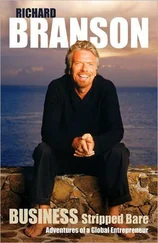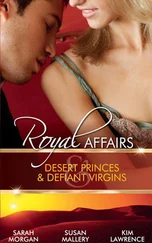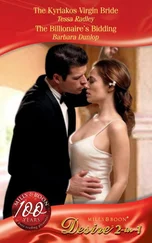I certainly plan to continue to work until I feel that I’m no longer making a real contribution to Virgin. I see a good thirty years of work ahead of me. It’s true that in my sixties there are some tasks that suit me better than others, but I see few real limitations to continuing in my current role.
In the UK, the government has recommended extending the age of retirement to sixty-seven, and many countries in the rest of Europe are contemplating similar legislation. It is not just governments, but company boards around the world, that are now facing the challenges of serving ageing populations.
So while it is certainly true that some employers may have negative preconceptions about hiring and retaining older workers, they are only doing themselves and their businesses a disservice. Entrepreneurs and managers who hope to succeed are taking a close look at older applicants.
Studies have shown that, contrary to popular perceptions, older workers actually have fewer timekeeping and absentee issues than do younger employees within a business; they also tend to have higher levels of commitment to their jobs and loyalty to their employers, which reduces staff churn and helps to reduce recruitment costs.
And there is a strong business case for companies to diversify the age groups they employ. In all our ventures, we put a real emphasis on offering great service, and, to succeed, we must truly understand our customers and see our service through their eyes. As our and others’ customer bases get older, managers will need staffers who mirror these changing demographics.
This is a challenge for Virgin since we have tended to be quite young at heart. Currently, the average age of the group is still fairly young, with more than a third of our staff under the age of thirty-five and only around 3 per cent over fifty-five years old.
This is largely determined by a few factors, including the sectors that we operate in and the newcomer status of some of the businesses. For example, Virgin Active, our health club chain, attracts a younger workforce due to the physical nature of the work. As the challengers of established brands, our airlines – Virgin America, Atlantic and Australia – have tended to be magnets for younger cabin crews and ground staff. These employee groups consist of such large headcounts that it does somewhat skew the overall average age of the Virgin group of companies. Even our finance business has younger staff – again, people interested in the company’s challenger status and also in new product development. But as we prepare for the future, this is a factor that clearly needs to change.
How? Well, many businesses retire their experienced staffers, both to cut costs when times get tough and as a matter of course. But those companies risk losing a lot of key skills when workers with a wealth of knowledge and experience leave the business.
One answer is to become more accommodating in work arrangements. Offering part-time jobs, job shares, flexitime and full-time jobs with longer holidays may attract older workers. This would enable everyone – and not just older employees! – to strike a better work-life balance and allow companies to retain their skills, experience and make a team for the newer generations.
I hope that with this approach our group will continue to maintain a very open policy of recruitment and that ageism will not be an issue. Hiring older workers isn’t just the right thing to do; it also makes good business sense.
Maybe more than you think
Q: Why were Virgin Blue aeroplanes painted red?
—Dick Percs, Australia
A:The name and the distinctive red planes were based on a play on words, but there is a lot more to the old Virgin Blue name than the colour, so let’s start this story at the beginning.
As I explained, we came up with the Virgin name one evening when discussing our new record shop idea.
We instantly loved it for many reasons, not least of which was that, even after the swinging sixties, the word was still somewhat risqué.
Virgin had a fresh, sexy feel to it; it declared that we were new to the music industry, and the business world in general. We excitedly scribbled it down with a big capital V – that scribble became the basis for the Virgin logo.
The original Virgin name turned out to be successful on many levels: It was unique, so it was instantly recognisable; it was memorable but not specific to one industry or region; and it was compatible with the brand that we would eventually build. We were lucky. These days, some entrepreneurs pay branding specialists a lot of money to create, test and refine a brand name and logo – but that’s no guarantee of a successful outcome. Any entrepreneur choosing a company name should think carefully about whether a proposed name is sufficiently versatile to be extended to future products and services. Virgin Records worked well in the entertainment industry, but we were not at all sure of ourselves in 1984, when we painted our company’s logo on the giant tailfin of Virgin Atlantic Airways’ one and only Boeing 747. It stood out – by that time we had chosen our distinctive shade of red.
Not everyone loved it. David Tait, one of the original group who set up the airline, gave me a tough time, declaring, ‘Nobody’s going to fly on an airline that won’t go all the way.’ But I dug in my heels and insisted it was better than ‘British Atlantic Airways’ – the original name of our start-up company – pointing out that the world really didn’t need another ‘BA’.
That fledgling airline became the foundation on which we built Virgin’s brand values and consolidated its international presence. Virgin Atlantic was soon a market leader because of its innovative approach, and because we provided great customer service and terrific value. Our distinctive marketing was always edgy, irreverent, self-deprecating and fun. As we said at the time, ‘with a name like Virgin you can’t take yourself too seriously’! In any case the word spread quickly and the airline’s success facilitated the launch of an extended family of other Virgin-branded companies all over the world.
Our unique name and brand, along with a consistent execution across every trading unit, made the company a success. As we introduced the various businesses that followed, we ensured that Virgin always represented added value, improved service and a fresh approach, from Virgin Money to Virgin Galactic. We knew, as did our customers and competitors, exactly what we stood for.
So, finally, let’s get back to the story behind the name Virgin Blue. In the 1850s, a large influx of immigrants arrived in Australia, hoping to make their fortunes in the gold fields. The Irish, many of whom were redheads, soon gained a reputation as hard drinkers and fighters. A fight, in local slang, was a ‘blue’. When a redheaded Irishman passed by, people would say, ‘There goes a blue’, and to this day Australians often give their redheaded friends the nickname ‘Bluey’ while ‘blue’ is the general equivalent to ‘pal’, ‘mate’ or ‘buddy’.
In 2000, when we were preparing to launch the airline in Australia, an Australian chef on Necker said to me ‘Why not call it Virgin Blue?’. He suggested that Aussies would connect our upstart nature and the traditional red logo with the name Virgin Blue. To highlight the play on words, we painted the planes a bold red. Following its strong domestic start, Virgin Blue became an international airline, and it now flies to the Middle East, many Pacific Island nations and North America-countries where the blue versus red wordplay is not understood. So in 2011, we renamed Virgin Blue and our other airlines in the region, uniting them all under the banner Virgin Australia.
Читать дальше












